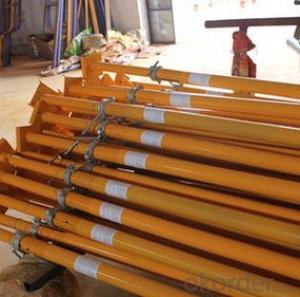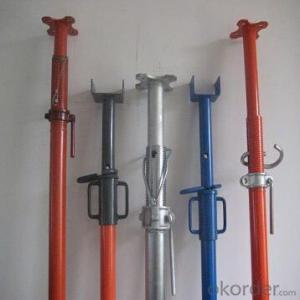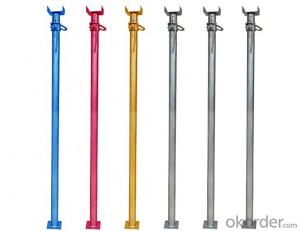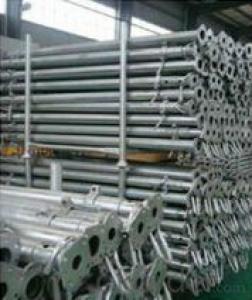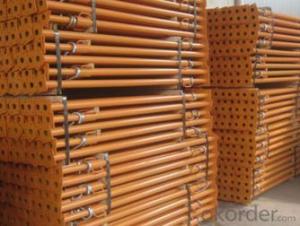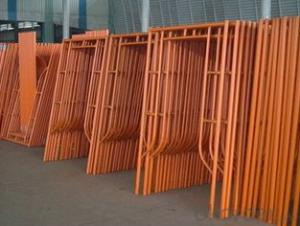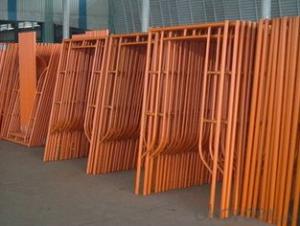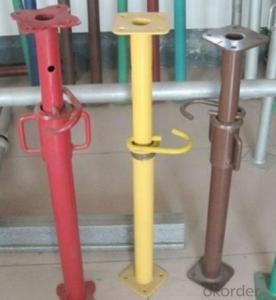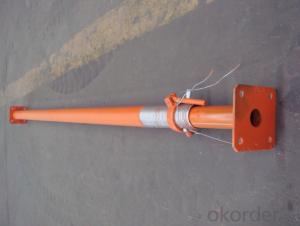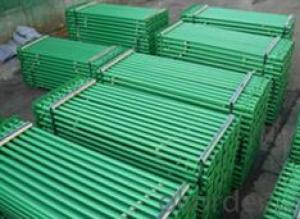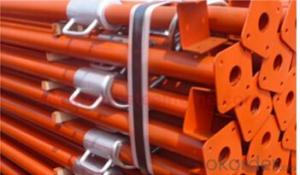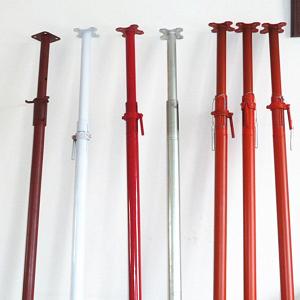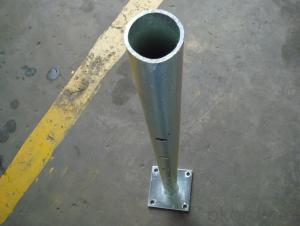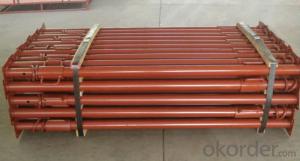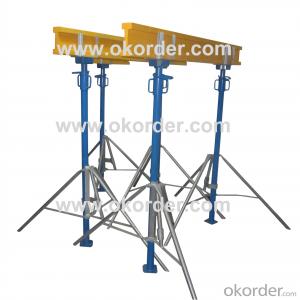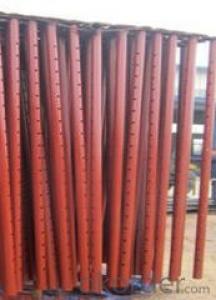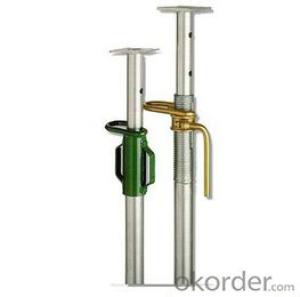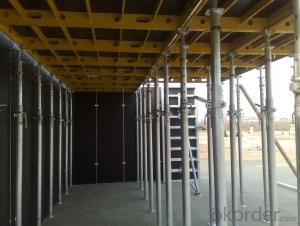steel Props Scaffolding/painted surface steel prop/ shoring prop
- Loading Port:
- Tianjin
- Payment Terms:
- TT OR LC
- Min Order Qty:
- 10000 PCS
- Supply Capability:
- 10000 PCS/month
OKorder Service Pledge
OKorder Financial Service
You Might Also Like
Quick Details
| material: | Q235 | standard: | use your standard or international standard | thickness: | 1.6mm to3mm or as your requirements |
| name: | steel Props Scaffolding/painted surface steel prop/ shoring prop | surface Treament: | as your requirements |
Packaging & Delivery
| Packaging Detail: | CARTONS THEN ON PALLET,OR AS YOUR REQUEST. |
| Delivery Detail: | WITH IN 25 DAYS |
Specifications
1. Reliable performance
2. Corrosion resistance
3. Durable finish standards
steel Props Scaffolding/painted surface steel prop/ shoring prop
1. Product Information
MIN | MAX | INTERNAL TUBE | EXTERNAL TUBE |
1.8m | 3.2m | 48mmx2.0mm | 60mmx2.0mm |
2.1m | 3.4m | 48mmx2.0mm | 60mmx2.0mm |
2.2m | 4.0m | 48mmx2.0mm | 60mmx2.0mm |
2.4m | 3.9m | 48mmx2.0mm | 60mmx2.0mm |
3.5m | 4.0m | 48mmx2.0mm | 60mmx2.0mm |
3.0m | 5.0m | 48mmx3.5mm | 60mmx3.5mm |
We can provide all kinds of scaffolding props with high quality at low price
height range:1.6 -2.9m ; 1.7 -3.0m ; 1.8-3.2m ; 2.0-3.6m ; 2.2- 4.0m ; 2.4-3.9m ; 2.5-4.5m ; 2.6-5.0m ; 3.0-5.0m ; 3.2-6.0m
Components: Steel Tube, Prop Sleeve, U-Head and Square or other shape Plate.
Top/base plate size: 120x120x3.75mm / 4.5mm / 5mm
Tube thickness: 1.6mm; 1.85mm; 2.0mm; 2.5mm; 3.0mm
OEM serviceare and Samples: available
- Q: Can a steel prop be used in combination with other support systems?
- Combining other support systems with a steel prop is possible. A steel prop, also known as an adjustable steel prop or acrow prop, is frequently utilized in construction and building projects to provide temporary support to walls, ceilings, beams, and other structures. Its design allows for easy height adjustments to meet project requirements. For more substantial or intricate structures, a single steel prop may not suffice in providing enough support. Consequently, it is often necessary to combine steel props with other support systems to ensure the stability and safety of the construction. Examples of combining steel props with other support systems include: 1. Scaffolding: Steel props can be used in conjunction with scaffolding systems to offer added support to the scaffolding structure. This proves particularly valuable when working at heights or when the scaffolding must bear heavier loads. 2. Formwork: During the pouring and curing process of concrete structures, such as walls or columns, steel props can be used to support the temporary formwork. The steel props help distribute the weight of the concrete and prevent the formwork from collapsing. 3. Shoring: By combining steel props with shoring systems, support can be provided to excavation sites or unstable ground conditions. Shoring systems typically consist of vertical supports, like steel beams or timber piles, and the addition of steel props enhances the overall stability of the shoring structure. 4. Beam and column support: Steel props can also be utilized in combination with other structural elements, such as steel beams or columns, to offer additional support during construction or renovation projects. This is particularly common when reinforcing or repairing existing structures. In summary, using steel props in tandem with other support systems is a widespread practice in the construction industry. It allows for increased flexibility and adaptability in providing temporary support to various structures, ultimately ensuring the safety and stability of construction projects.
- Q: Are steel props suitable for supporting temporary roofs?
- Yes, steel props are suitable for supporting temporary roofs. Steel props, also known as adjustable steel props or acrow props, are commonly used in construction for temporary support of structures such as roofs, walls, and floors. They are designed to provide stability and strength, making them ideal for supporting temporary roofs. Steel props are made from high-quality steel, which ensures their durability and load-bearing capacity. They can be easily adjusted to the desired height, allowing for proper alignment and support of the temporary roof. Steel props typically have a threaded adjustment mechanism that enables fine-tuning of the height, providing flexibility in various construction scenarios. Furthermore, steel props have a wide range of load-bearing capacities, making them suitable for different types of temporary roofs. They can withstand significant loads and distribute the weight evenly, thus ensuring the stability and safety of the roof structure. Additionally, steel props are designed to resist rust and corrosion, which makes them suitable for outdoor applications, even in adverse weather conditions. In summary, steel props are a reliable and suitable choice for supporting temporary roofs. Their strength, adjustability, and durability make them an essential tool in construction projects where temporary roof support is required.
- Q: What are the different materials used for steel props?
- The different materials used for steel props typically include high-quality steel alloys, such as carbon steel or stainless steel. These materials are chosen for their strength, durability, and resistance to corrosion, making them suitable for supporting heavy loads and withstanding harsh environmental conditions.
- Q: What are the main maintenance requirements for steel props?
- The main maintenance requirements for steel props include regular cleaning to remove dirt and debris, inspection for any signs of damage or wear, and lubrication of moving parts. It is also important to store the props in a dry and secure area to prevent rust and corrosion. Additionally, proper handling and careful use of the props can help prolong their lifespan and ensure safe operation.
- Q: How do you determine the number of steel props required for a project?
- To determine the number of steel props required for a project, several factors need to be considered. These include the load that the props will bear, the spacing between the props, the height and length of the supported structure, and any specific requirements or regulations governing construction practices. Conducting a thorough structural analysis and consulting with a qualified engineer or construction professional is crucial in accurately determining the number of steel props needed for a project.
- Q: How much is the glass floor cost. That's the kind of steel frame
- General household 300-500 yuan / square or so, on the ground floor of the mall glass 500-1000 yuan / square meter, it is too cheap quality is not guaranteed, aerial penetration function is more expensive.
- Q: Are steel props suitable for use in the construction of laboratories?
- Yes, steel props are suitable for use in the construction of laboratories. Steel props provide strong structural support and stability, making them ideal for use in laboratory construction where safety and durability are crucial. Additionally, steel props are adjustable in height, allowing for easy customization to fit the specific requirements of laboratory construction projects.
- Q: Are there any environmental considerations when using steel props?
- Yes, there are environmental considerations when using steel props. Steel production requires significant amounts of energy and resources, contributing to greenhouse gas emissions and environmental degradation. Additionally, the extraction and processing of steel raw materials can have negative impacts on ecosystems and local communities. Proper disposal or recycling of steel props at the end of their life cycle is also essential to minimize environmental harm.
- Q: Are steel props suitable for supporting temporary walkways or catwalks?
- Yes, steel props are suitable for supporting temporary walkways or catwalks. Steel props are sturdy, adjustable, and capable of bearing heavy loads, making them an ideal choice for providing reliable support and stability for temporary structures like walkways or catwalks.
- Q: How do steel props accommodate for changes in load during construction?
- Steel props are adjustable support systems used in construction to provide temporary support to structures. They are designed to accommodate changes in load during construction by having adjustable lengths. This allows the props to be extended or retracted as needed to provide the necessary support and stability, ensuring that the structure remains safe and balanced even as the load changes.
Send your message to us
steel Props Scaffolding/painted surface steel prop/ shoring prop
- Loading Port:
- Tianjin
- Payment Terms:
- TT OR LC
- Min Order Qty:
- 10000 PCS
- Supply Capability:
- 10000 PCS/month
OKorder Service Pledge
OKorder Financial Service
Similar products
Hot products
Hot Searches
Related keywords
